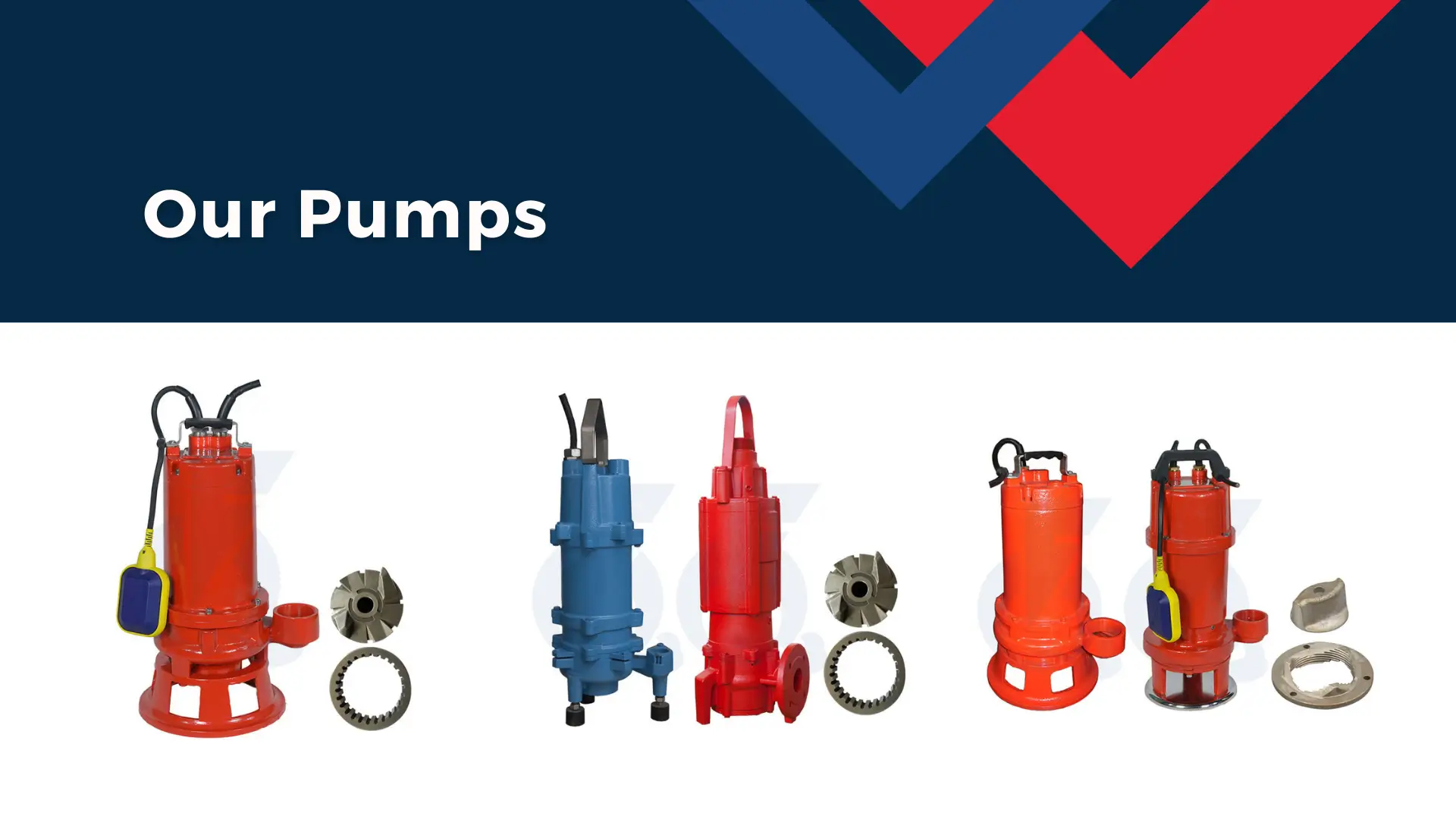A submersible pump is available for various purposes: water supply abstraction from basins, dealing with sewage applications, and irrigating farmland.
Many of the benefits are communicated to the prospective users by comprehending how a submersible pump functions.
Key Components of a Submersible Pump

The Impeller
The impeller also plays a very important role in creating suction and pressure within such a design.
An impeller, while it rotates, creates a zone of low pressure at its inlet; this low-pressure zone draws the water into the system.
Major types of impellers include open, semi-open, and closed design.
For instance, open impellers are recommended when the liquids handled contain solids, whereas impellers closed perform the best service in clean water applications.
In most occasions, the selection of appropriate type of impeller can improve performance of the pump to a great extent and best suited for particular requirements of users.
The Electric Motor
An electric motor, which is usually located inside the pump casing, is responsible for providing a driving force to the impeller in order to assist the working mechanism of the pump.
Its location is such that the pump remains submerged, offering some protection from environmental elements such as dampness and much debris.
This requires a strong and effective motor to be paired with it, especially if needs be that massive volumes of water or fluid with loads of debris within them are dealt with.
The size of the motor, along with the power rating, will be the most determining factors in the overall effectiveness and suitability of the pump in addressing a particular workload.
Pump Casing
It primarily protects the internal parts from the influence of the environment while acting as a container for the fluid being transferred.
Casings are normally manufactured from corrosion-resistant and long-lasting materials like stainless steel or high-grade plastic.
The durability not only prolongs the pump service life but also guarantees reliability in performance for a wide variation in environmental parameters.

Seals and Bearings
Seals are critical to preventing water ingress into the motor and other electrical parts. This ensures the safety of operation and reliability of the pump.
They provide a sort of barrier that protects the sensitive parts from moisture damage.
Bearings, on the other hand, enable the impeller to turn freely with less friction and result in minimal wear out after some time.
Seals and bearings can differ depending on the application and type of fluid that will be transferred.
Appropriate seals and bearings improve the reliability and effectiveness of the pump.
Read More:
How a Submersible Pump Works
Intake and Suction
By the rotation of the impeller, there is created a suction effect caused by the movements of the blades which draws surrounding water into it.
This operational point is rather important because it forms a very good basis for good fluid flow in any system.
The design inlet and impeller speed combine to maximize this process of suction, which allows the pump to work with various water levels and conditions.
Pressurization and Discharge
This serves to increase the pressure of the water high enough to push it, outside the pump outlet, with the energy required to ensure its arrival at a farther location in the drainage area, storage tank, or another treatment facility.
This characteristic of maintaining reasonable pressure thus lies at the very heart of its functionality and, therefore, efficiency across a wide range of applications.

Electrical Control and Power Supply
Electrical controls, on the other hand, control the pump in such a way that the user governs the flow rate and pressure.
In applications whose conditions vary from one end to another-such as those in the flood control or dewatering projects-such flexibility will be of immense value.
More sophisticated control systems can take automation and real-time monitoring one step further.
Sewage and Wastewater Management
Submersible pumps find extensive uses in sewage and wastewater treatment plants because of their very peculiar design, which is able to handle liquid wastes and even solid debris.
The very fact that pumps are capable of operating under such an environment is a predisposing factor toward treating the generated waste effectively.
Submersible pumps perform with wide capability in transferring wastewater to protect citizens from public health hazards and maintain environmental safety by avoiding overflow of untreated waste, hence ensuring better treatment processes.
Flood Control and Dewatering
Such water pumps come in very handy in emergency flood situations where there is an urgent need for the quick removal of excess water.
Because they can operate under water, they are able to help in such situations where quick and efficient drainage is required. Besides emergency situations, submersible pumps have also widely been used in construction sites and mining areas where removal of water from the sites is crucial for safety and workability.
In such situations, the reliability and efficiency of such pumps prove their worth in both emergency response and routine operations.

Conclusion
From wastewater management to the control of flooding and irrigation, submersible pumps remain one of the most versatile tools indispensable in several industries.
Key characteristics, such as robust construction, efficient function, and adaptability, make them ideal for anyone looking for reliable solutions for fluid transfer.
A study of their constituent parts and their functions can enable prospective users to make choices that will ensure they get the best suitable submersible pump for their intended needs and purposes.

